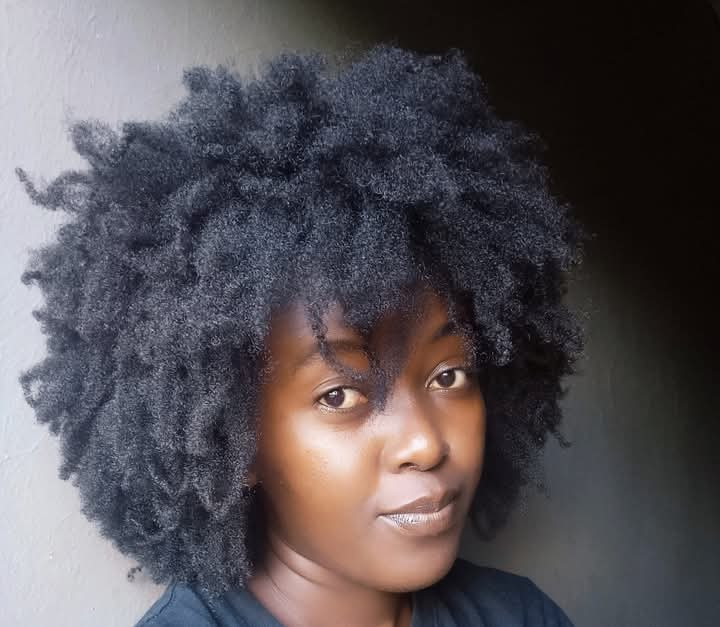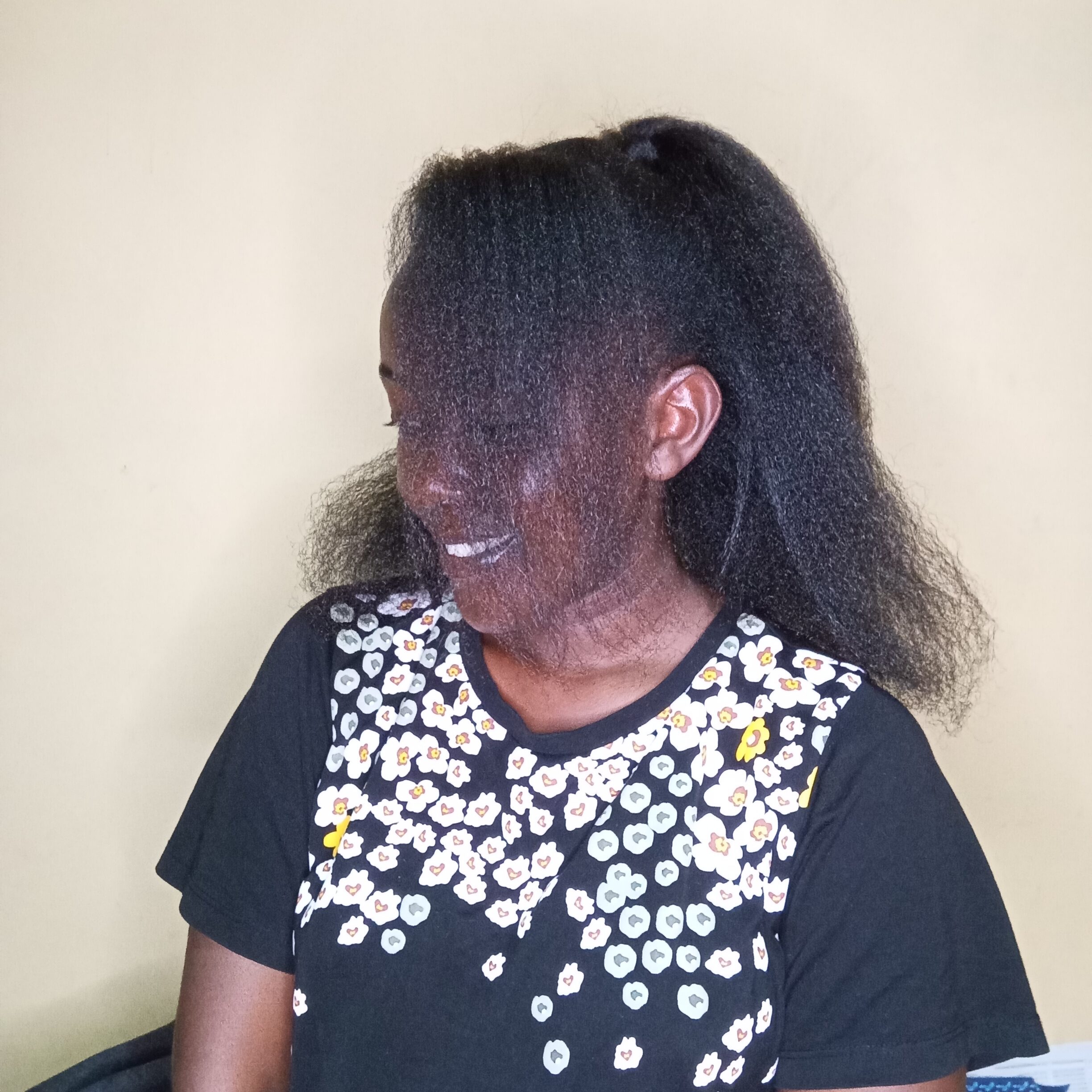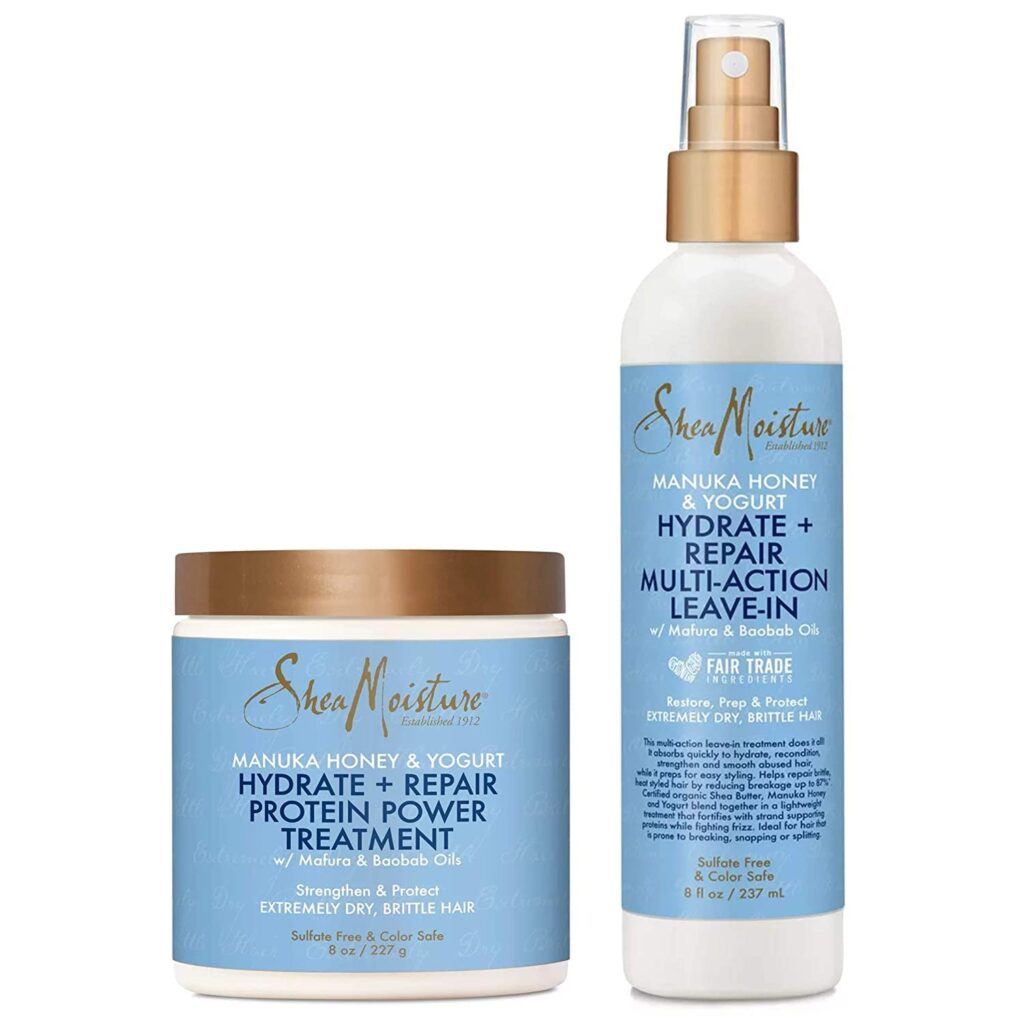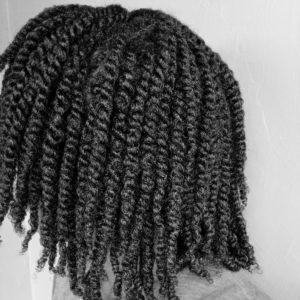If you’ve ever spent hours trying to detangle your 4C hair, only to find tiny knots at the ends of your strands, you’re not alone. Tangles and single strand knots (also called fairy knots) are some of the most frustrating things about having 4C hair. But don’t worry, understanding what causes them is the first step to preventing them. Let’s break it all down so you can spend less time detangling and more time enjoying your gorgeous curls.
Why Your 4C Hair Gets Lots of Tangles & Single-Strand Knots
1. The Nature of 4C Hair Itself
4C hair is naturally prone to tangles because of its tight coil pattern. Unlike straighter hair types, where strands easily glide past each other, 4C curls tend to wrap around themselves, making them more likely to get tangled. These tight curls also shrink a lot, which means the strands constantly coil up and intertwine. The more your hair shrinks, the higher the chance of knots forming.
To minimize tangles, keeping your hair stretched can help. Using styling techniques like banding, African threading, or twist-outs can reduce shrinkage and prevent excessive knotting. The Stretchy Hair Banding Method is a great way to keep your hair stretched without heat while reducing tangles.
2. Lack of Moisture
Dry hair is one of the biggest causes of tangles and knots. When your hair lacks moisture, it becomes rough and stiff, making it easier for strands to catch onto each other instead of smoothly separating. Hydrated hair, on the other hand, has more elasticity, meaning it can move freely without tangling as much.
A good moisturizing routine includes a water-based leave-in conditioner like the OKAY Black Jamaican Castor Oil Leave In Conditioner, which helps keep hair soft and manageable. Sealing in that moisture with an oil like jojoba or castor oil prevents dryness and reduces the likelihood of knots.

3. Not Detangling Regularly or Properly
Skipping detangling sessions or rushing through them can lead to serious tangles and knots. If you don’t gently remove shed hairs during detangling, they stay in your hair and tangle with the rest of your strands, forming stubborn knots over time.
The best way to detangle 4C hair is to use a wide-tooth comb or your fingers while your hair is damp and coated with a slippery conditioner or detangler. The BESTOOL Detangling Brush is a lifesaver because it helps glide through knots without breaking the hair. Always start from the ends and work your way up to prevent unnecessary breakage.
4. Wearing Hair Loose Too Often
Wearing your hair out in styles like afros or wash-and-gos looks stunning, but it can also increase the risk of tangles. When your hair is loose, the strands rub against each other, creating friction that leads to knots. Wind, friction from clothing, and even touching your hair too often can make the situation worse.
Low-manipulation styles like twists, braids, or buns help keep your strands in place, reducing friction and preventing tangles. If you love wearing your hair out, try using a light oil or styling cream to keep the curls defined and less likely to tangle.

5. Split Ends and Damaged Strands
If your ends are dry, frayed, or split, they are more likely to tangle around themselves and form knots. Damaged ends don’t have a smooth surface, so instead of gliding past each other, they latch onto neighboring strands, creating tangles.
Regular trims are essential for keeping knots under control. Trimming every three to four months, or as needed, helps remove rough ends before they turn into a bigger problem. If you notice more knots than usual, it might be time for a trim. A good pair of professional shears like the Equinox Professional Hair Cutting Scissors can ensure a clean cut without causing further damage.
6. Sleeping Without Protecting Your Hair
If you go to bed without protecting your hair, all that tossing and turning can create friction between your strands and your pillowcase, leading to knots and tangles. Cotton pillowcases absorb moisture from your hair, making it even more prone to dryness and breakage.
Using a satin or silk bonnet or sleeping on a satin pillowcase helps reduce friction and keeps your hair moisturized overnight. The Yanibest Satin Bonnet is a great option because it stays on all night and prevents hair from tangling while you sleep.
7. Overwashing or Using Harsh Shampoos
Frequent washing with harsh shampoos can strip your hair of its natural oils, making it dry and more prone to tangling. 4C hair doesn’t need to be washed as often as straighter textures because it doesn’t produce as much oil. Washing too frequently or using shampoos with sulfates or rather clarifying shampoo can leave your hair feeling rough, leading to more tangles and knots.
Instead, use a moisturizing sulfate-free shampoo like the SheaMoisture Jamaican Black Castor Oil Strengthen & Restore Shampoo. It cleanses the scalp without stripping moisture, keeping your hair soft and manageable.
8. Not Sealing in Moisture Properly
Even if you moisturize your hair, if you don’t seal it in, the moisture will evaporate quickly, leaving your strands dry and more prone to tangling. The LOC or LCO method is a great way to ensure long-lasting hydration.
A good routine might include:
- A water-based leave-in conditioner like Aunt Jackie’s Curls and Coils Quench Moisture Intensive Leave-In Hair Conditioner.
- A sealing oil like Tropic Isle Living Jamaican Black Castor Oil
- A thick cream like Camille Rose Almond Jai Twisting Butter to lock in hydration
This helps keep your hair soft and prevents knots from forming due to dryness.

9. Friction from Clothing and Accessories
Certain fabrics, especially wool and cotton, can cause friction when they come into contact with your hair. If you wear sweaters, scarves, or jackets with rough materials, your hair can rub against them and create tangles, especially at the nape of your neck.
To prevent this, wear your hair in a protective style or tuck your ends when wearing high-collared clothing, or use a satin-lined hoodie or scarf. The Grace Eleyae Satin-Lined Cap is perfect for protecting your hair from friction while still looking stylish.
How to Prevent Tangles and Knots
Now that we know what causes tangles and knots, here are some simple ways to prevent them:
- Keep hair moisturized with water-based products and seal in the moisture with oil or butter.
- Detangle gently using fingers or a wide-tooth comb, starting from the ends.
- Wear low-manipulation styles like twists or braids to minimize friction.
- Trim split ends regularly to keep strands smooth and knot-free.
- Protect hair at night with a satin bonnet or pillowcase.
- Avoid overwashing and use a gentle, sulfate-free shampoo.
- Stretch your hair using braids or banding to prevent excessive shrinkage.
Tangles and single strand knots might seem inevitable with 4C hair, but with the right care, you can significantly reduce them. The key is to keep your hair hydrated, protected, and handled with care. Once you build a routine that works for you, you’ll notice fewer tangles and knots, making wash days so much easier.
So bestie, what’s been your biggest struggle with tangles and knots?



